 Illustrated analysis of near-term Russian maritime Special Forces underwater vehicles and capabilities
Illustrated analysis of near-term Russian maritime Special Forces underwater vehicles and capabilities
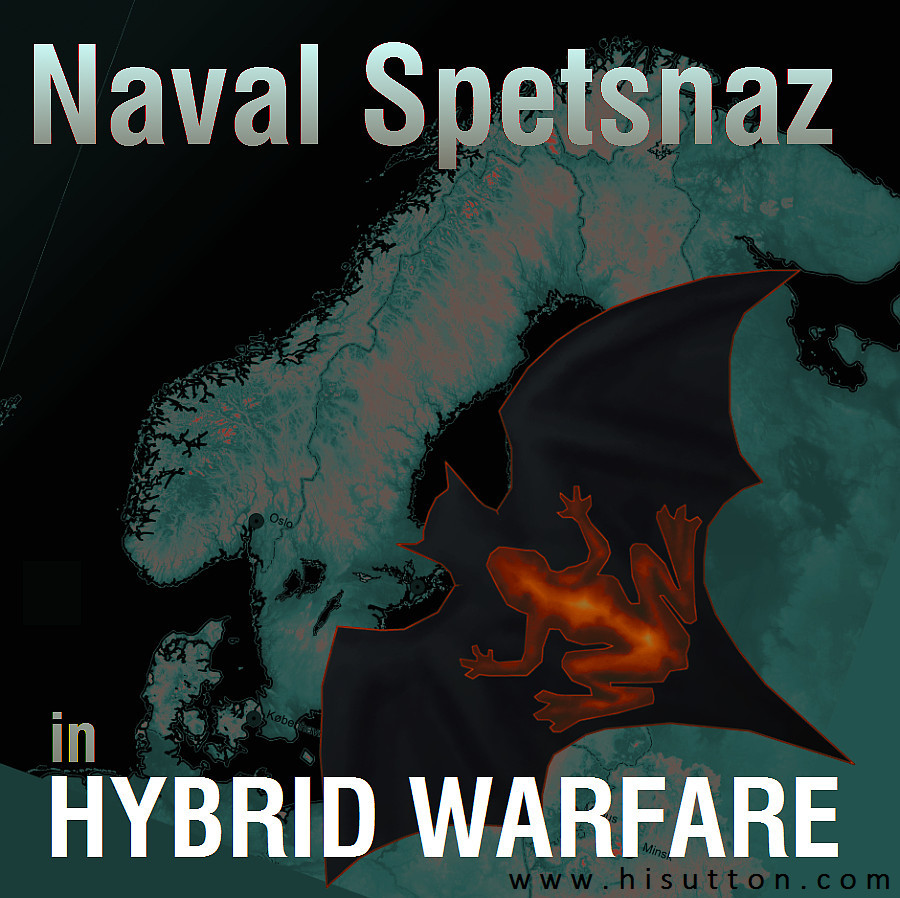
The frog and bat symbol is associated with Naval Spetsnaz
With the annexation of the Crimea to the recent submarine scare in Sweden, Russian special forces have come under renewed focus. Irrespective of whether Naval Spetsnaz have been involved in any operations during the ‘Hybrid War’, their capabilities are among those best suited to this kind of operating environment.
Hybrid warfare is an evolution of earlier indirect, proxy and covert wars. It is a way of expanding territory and pushing geopolitical agendas with every means possible up to the point of an overt military action. Inevitably the enemy will be attacked in multiple ways simultaneously creating a complex and often contradictory situation which plays out in he aggressor's favor. Many of these attacks will be obvious and hard to deny, but crucially they will all be denied. It can therefore include substantial troop movements as long as there is some degree of deniability so that it's one power's word against another. In practice it is to attack by a mixture of special forces, information campaigns and back door proxies. And by means of sending an army 'on holiday' to another country.
As people research information about Russian Naval Special Forces much of what is shared is out of date. This article seeks to sort through the chaff and present as up to date view as is practical. It is based on public information (albeit mostly obscure) with a certain amount of deduction thrown in to paint a picture of these forces underwater vehicles.
Feedback and corrections welcome - CONTACT.
The ultimate book of Special Forces subs Covert Shores 2nd Edition is the ONLY world history of naval Special Forces, their missions and their specialist vehicles. SEALs, SBS, COMSUBIN, Sh-13, Spetsnaz, Kampfschwimmers, Commando Hubert, 4RR and many more.
Check it out on Amazon
Background
The modern concept of Naval Spetsnaz Brigades were formed by the Soviet Union in the 1950s. Although there were outside influences, the Soviets invested heavily in home-grown technology and doctrine which caused a significant divergence from the Western model. In the Soviet model Naval Spetsnaz Brigades were tasked with reconnaissance (both across the beach and of underwater defenses, landing zones etc), preparation of pre-emptive strikes (e.g. placing nuclear mines in enemy and neutral ports and waterways) and preparation of coastal raids, particularly on the remote radar and SOSUS outposts. The extent to which they conducted cross-border operations during the Cold War is open to discussion although the widespread view is that they did. The belief is that because of the covert nature of their operations and lower likelihood of compromise Naval Spetsnaz got more cross-border time than their army colleagues. This logic still holds true today.
Since the collapse of the USSR in 1991 the Naval Spetsnaz Brigades went through the same period of neglect as other units and, more recently, have taken on more Western influences again. However, the flavor of Naval Spetsnaz is still very Russian.
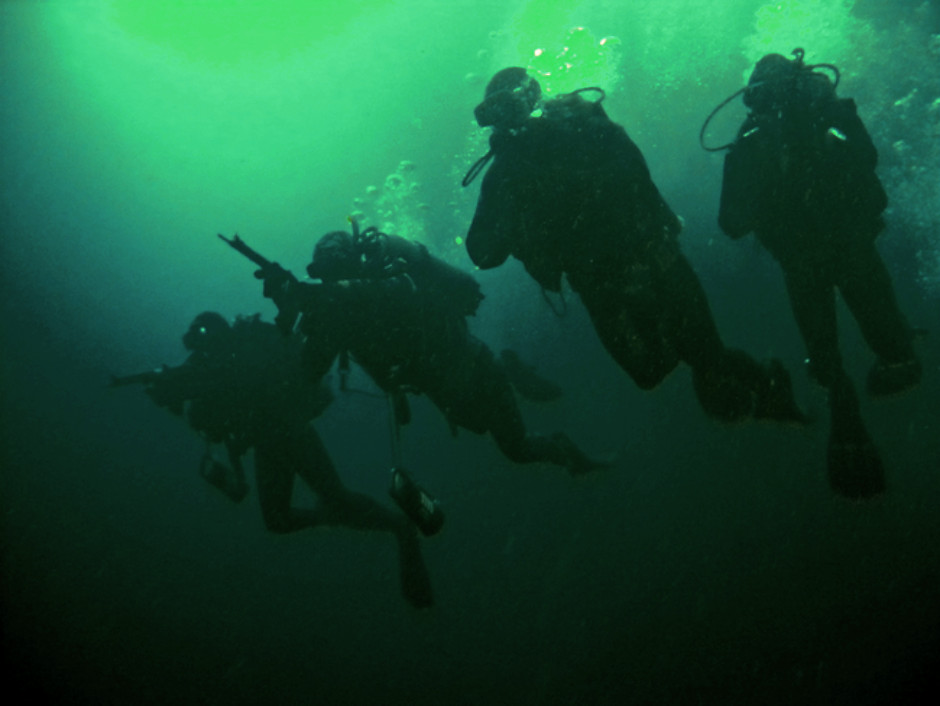
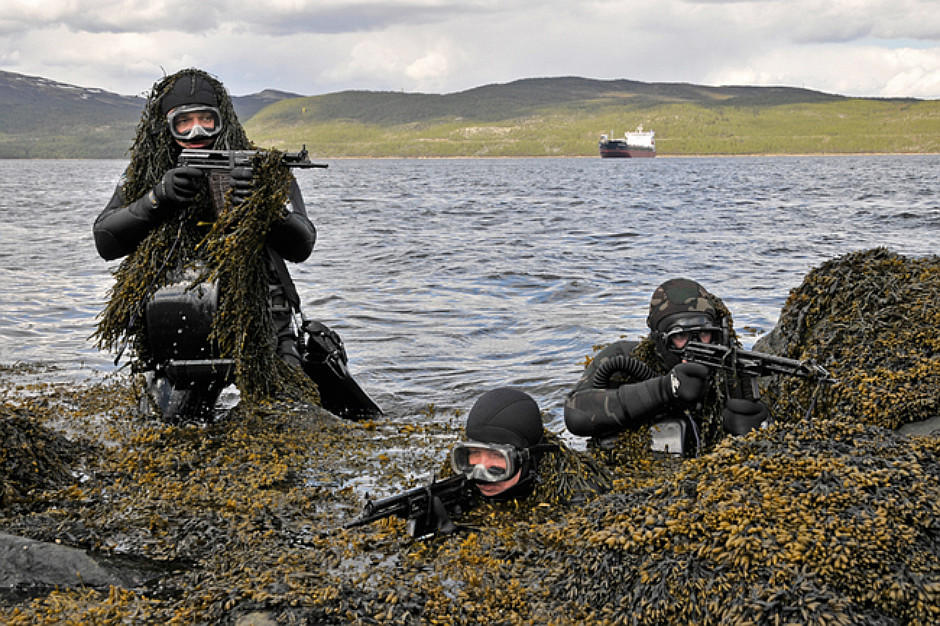
Russian Naval Spetsnaz, Northern Fleet. Note the APS underwater assault rifles. Photos V. Pliska and S. Koretz, 2012
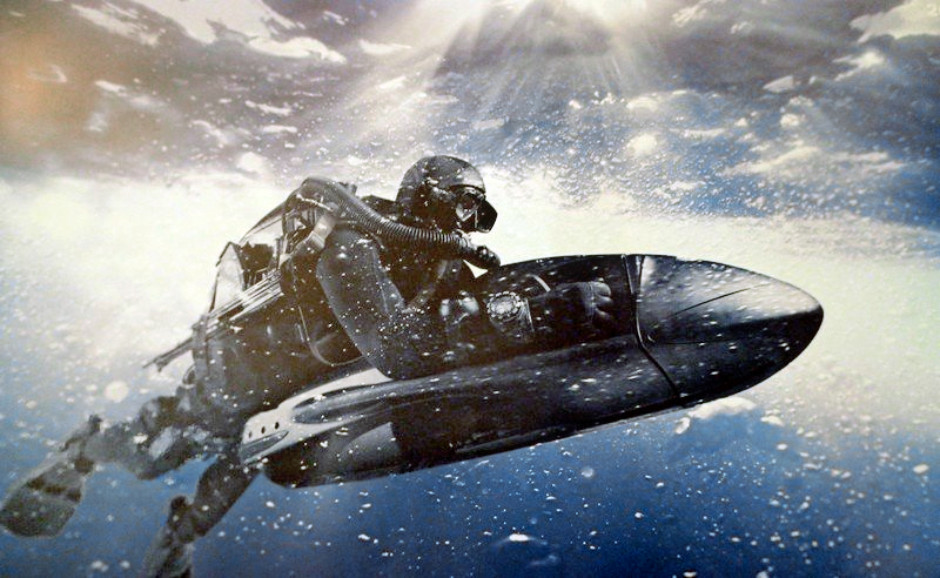
A Russian Spetsnaz diver based in Crimea demonstrates a Rotinor Divejet 414. Photo from Russian MOD calendar 2017.
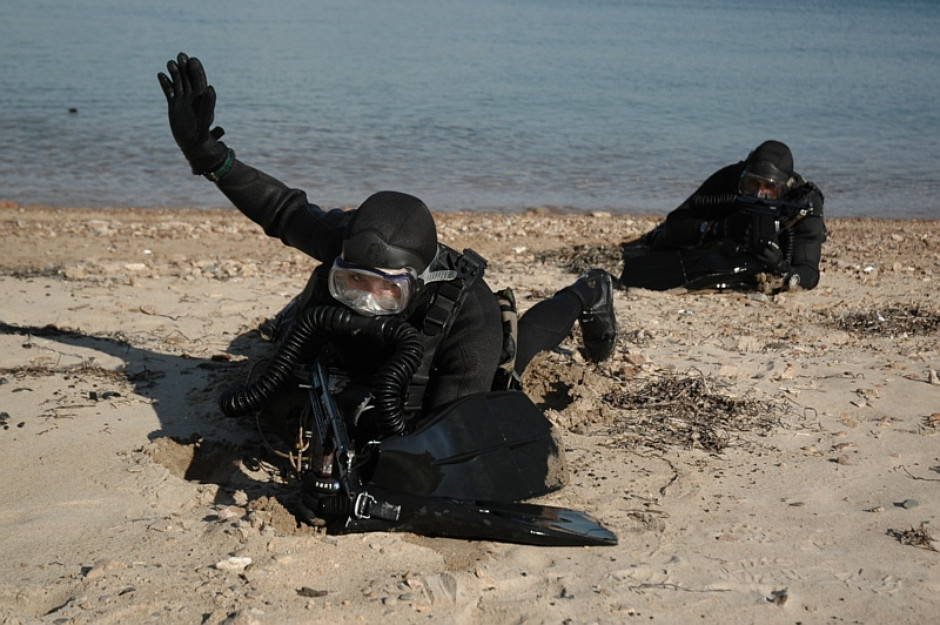
In Soviet doctrine the primary way for Spetsnaz divers to get into the water was by parachute, sometimes even jumping with their DPVs strapped to their bodies. Air mobility still has some relevance but for Hybrid Warfare we should expect a more subtle approach: submarine. The Russians have never adopted Dry Deck Shelters (DDS) (remember, only the SEALs and SBS have those!) or even lock-out chambers in patrol submarines (SSKs) so any Spetsnaz infiltrating NATO shores will have to exit the boat Soviet style: through the torpedo tubes. This is a comparatively dangerous and uncomfortable way to exit or enter a submarine and generally requires the sub to bottom-out in shallow water. Divers, DPVs and any gear need to be hauled out of the claustrophobic confines. Another common method is from boats or quasi-civilian surface ships which may also act as mother-ships for SDV operations.
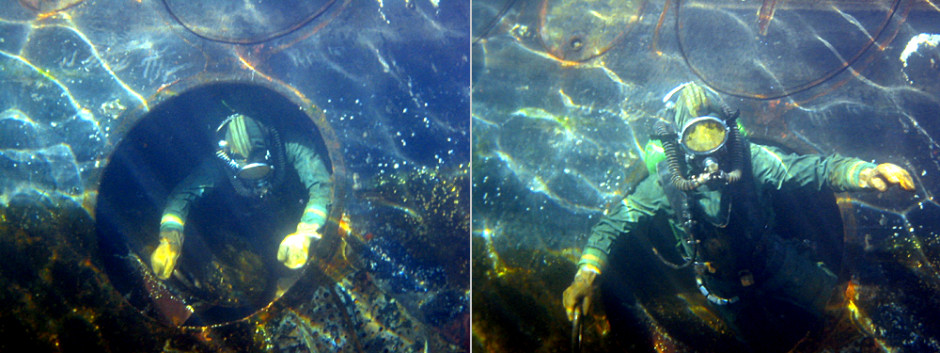
Spetsnaz diver practices exiting a submarine via the forward torpedo tubes. Not for the faint hearted! Photo credit Pavlo1
In more modern times they have added maritime counter-terrorism to the list although it is unclear to the author the extent to which this is organized as separate units. In general Russia was slower to respond to international terrorism than the West and mostly adopted the Western tactical methods and equipment when it did so. Maritime Counter-Terrorism is less widely covered than other CT topics but suffice it to say that most diver propulsion devices (DPVs) and some Swimmer Delivery Vehicles (SDVs) are marketed for this purpose. And it is most likely from this ‘paramilitary’ channel that Russia has obtained relatively up to date Western underwater craft. It would therefore not be surprising if a Spetsnaz operator turned up riding a DPV normally associated with NATO forces. However, this article covers the Russian origin kit which anyway is the more likely.
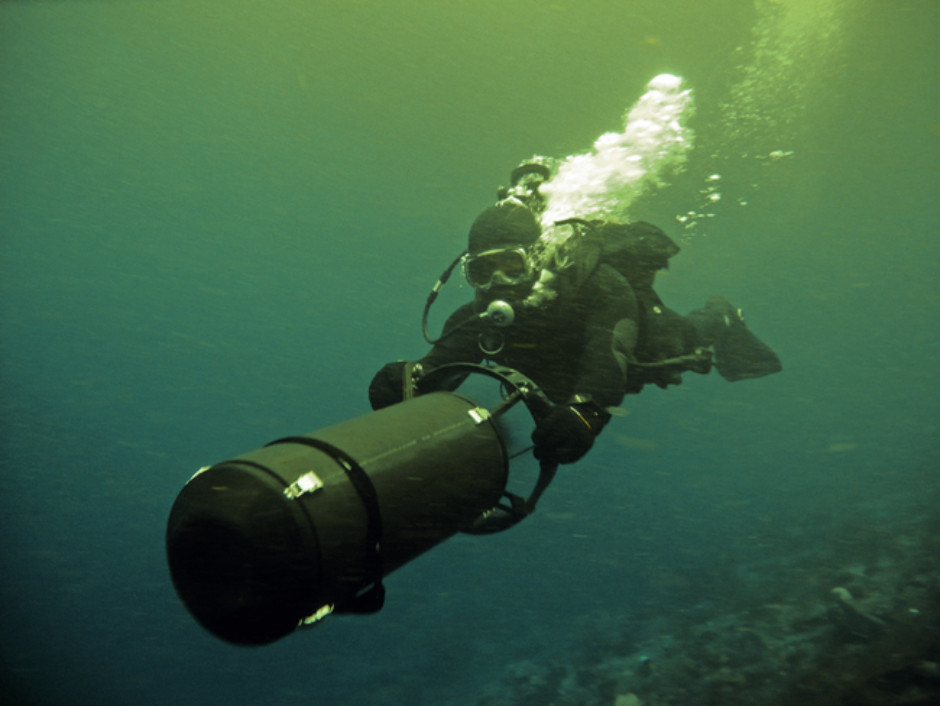
Russian Naval Spetsnaz demonstrating an imported DPV, probably a US made Gavin type. Photo V. Pliska and S. Koretz, 2012
In Hybrid Warfare Naval Special Forces can adapt to several tasks:
a) Location, identification, tapping and disruption of underwater communications cables
b) Observation of ‘enemy’ naval exercises
c) Coastal raids which can be passed off as carried out by aligned irregular military units notionally outside Russia’s control
d) Kidnapping of high-value targets within reach of coast
e) Low-level sabotage and ‘show of force’ missions intended to frustrate, distract and intimidate enemies
f) Making up for limited conventional naval assets during sudden flare-ups in conflict
g) Training and equipping waterborne saboteurs of aligned irregular/rebel units
These are just a few, the reader is invited to think up more. The only point is that Special Forces, particularly maritime ones, are particularly suited to low-level conflicts where a degree of deniability is required.
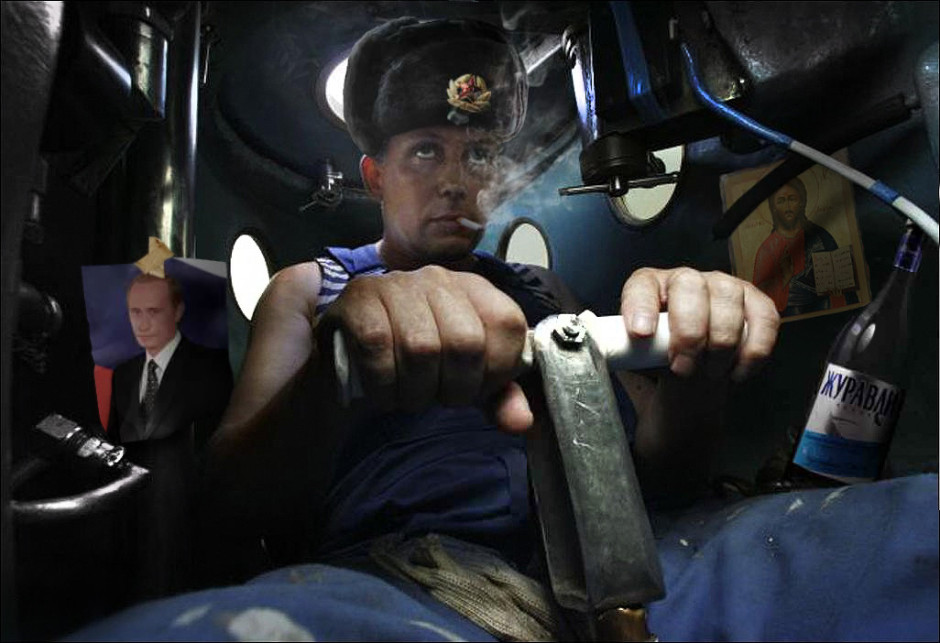 My favourite joke image of the recent submarine incursion in Sweden. Credit Moosefoot, Militaryphotos.net HERE
My favourite joke image of the recent submarine incursion in Sweden. Credit Moosefoot, Militaryphotos.net HERE
Current underwater vehicles
Proton-3 DPV
Probably the main underwater vehicle, this is the up to date model of a long line of Soviet diver scooters. These craft can carry one or two divers in a partially exposed position for relatively short journeys underwater. DPVs in general have many limitations compared to SDVs, but they are also cheaper and of course much smaller, creating niche where they are useful. They are particularly relevant for over-the-beach missions where they can be treated as disposable thus simplifying the mission profile considerably, something which few Navies would do with a larger SDV. The Spetsnaz operated these more extensively than most of their NATO adversaries although in modern times advancements in technology and budget constraints has narrowed the gap in this respect.
The closest equivalent in NATO forces is the US made Stidd DPD (Diver Propulsion Device). Although very different in appearance, both are modern and robust craft built to military specifications, carrying one or two divers and able to tow store containers. Specifications are difficult to come by but it will be quite slow (~2-3kts) and have a range of 10-20km, essentially the same as their NATO equivalents.
The core Proton-3U is a single diver propulsor which is ridden in such away as the diver lays prone in front of the motor. He is protected from the oncoming water by a hemispherical water shield and presented with basic navigation aids. The hydroplanes (actually box-like control surfaces) are also mounted up front.

Original artwork. CLICK for HIGH-RESOLUTION image. Spetsnaz diver riding Proton-3U DPV towing a storage container. He is wearing an IDA-71 rebreather on his back and carrying an ADS amphibious assault rifle
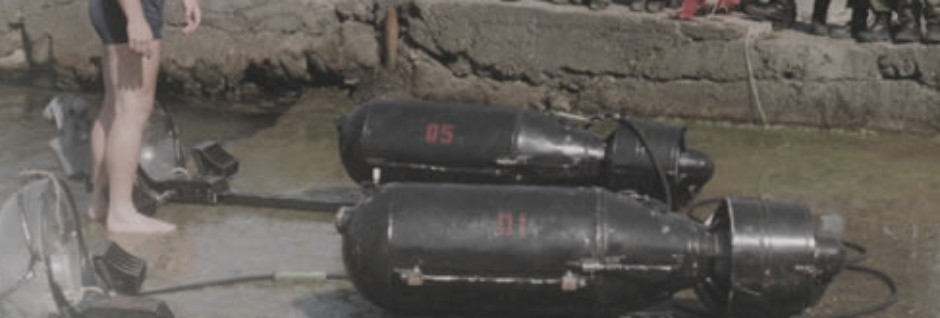
The Proton series of DPVs are modular and can be combined with storage containers and various sections to give a wide number of configurations with increased performance and carry capability. There is no solid evidence of these being in service.
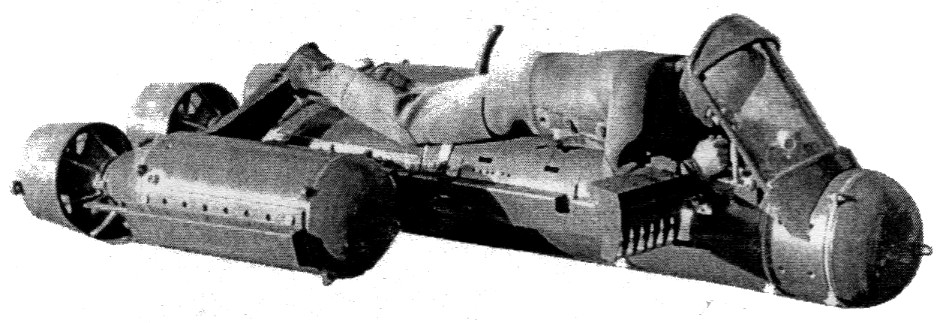
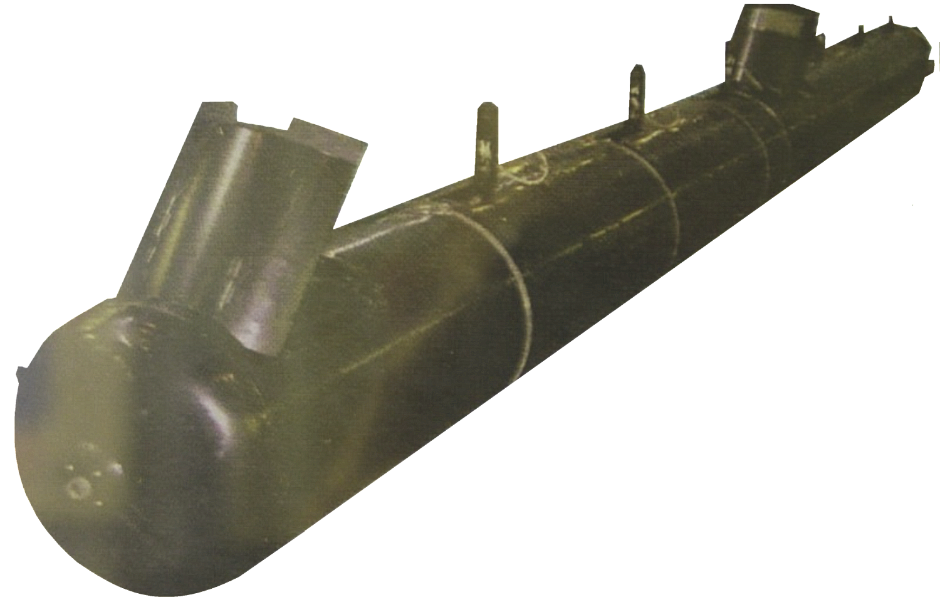
The modular configurations are not instantly recognizable
Get The essential guide to World Submarines
This Covert Shores Recognition Guide Covers over 80 classes of submarines including all types currently in service with World Navies.Check it out on Amazon
TRITON-NN Submersible boat (SDV)
Heavily influenced by equivalent Western designs, the Triton-NN is a private project to create an SDV which can travel greater distances and operate largely independently of mother ships or mother submarines. submersible boats inevitably compromise on underwater performance and only achieve the great endurance if most of the mission is conducted on the surface. However, they offer greater mission flexibility and independence of action for Special Forces.
It is unlikely that the Triton-NN has entered Spetsnaz service although the recent Swedish submarine incursion has brought this type under the spotlight. As you can see it is essentially a boat hull with a box-like upper section with access panels on the roof. Pop-out thrusters act both as underwater propulsion and steering.

Original artwork. CLICK for HIGH-RESOLUTION image.
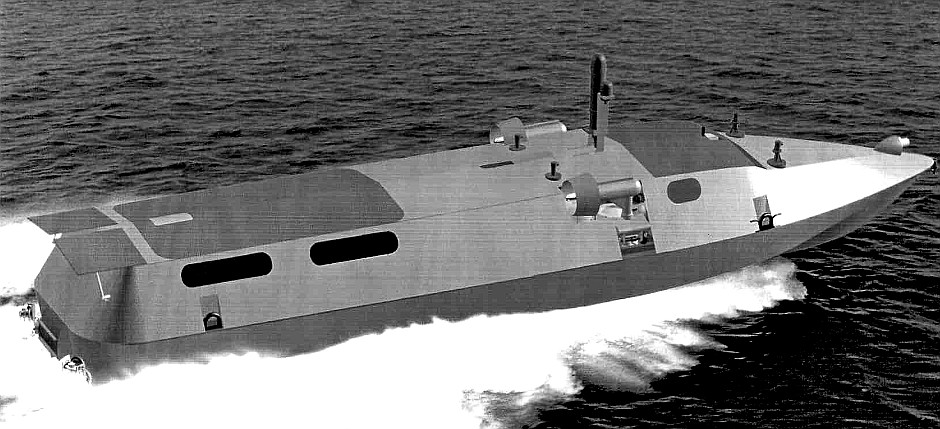
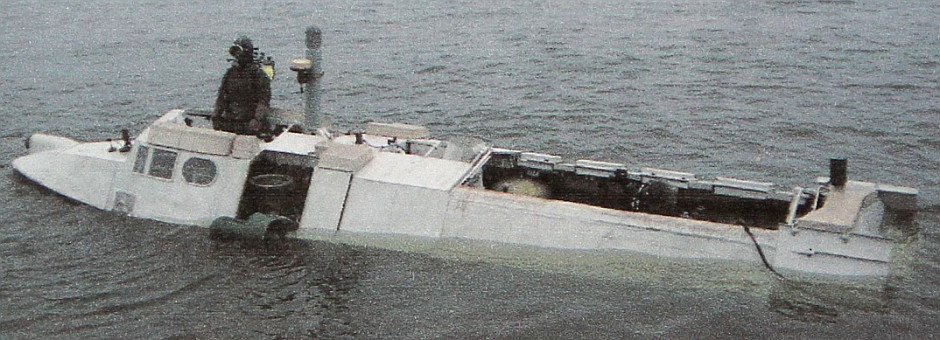
SOM-1 DPV
In some respects the little brother of the Proton-3, the SOM-1 (appears COM-1 in Russian alphabet) is very similar n layout. Lighter weight and often not fitted with the water shield, performance is generally lower. it is light enough to be thrown over the side of an inflatable boat, greatly increasing flexibility of launch platforms whilst retaining a modest performance and robustness. It is likely that this too is in service with Spetsnaz and it is exported to other Special Forces.
Length: 2.2m
Height: 0.44m
Beam: 0.53m
Weight: 66kg
Speed: 2kts max (1.9kts with two divers)
Max depth: 40m
Endurance: 6hrs
Cruising range: 16km
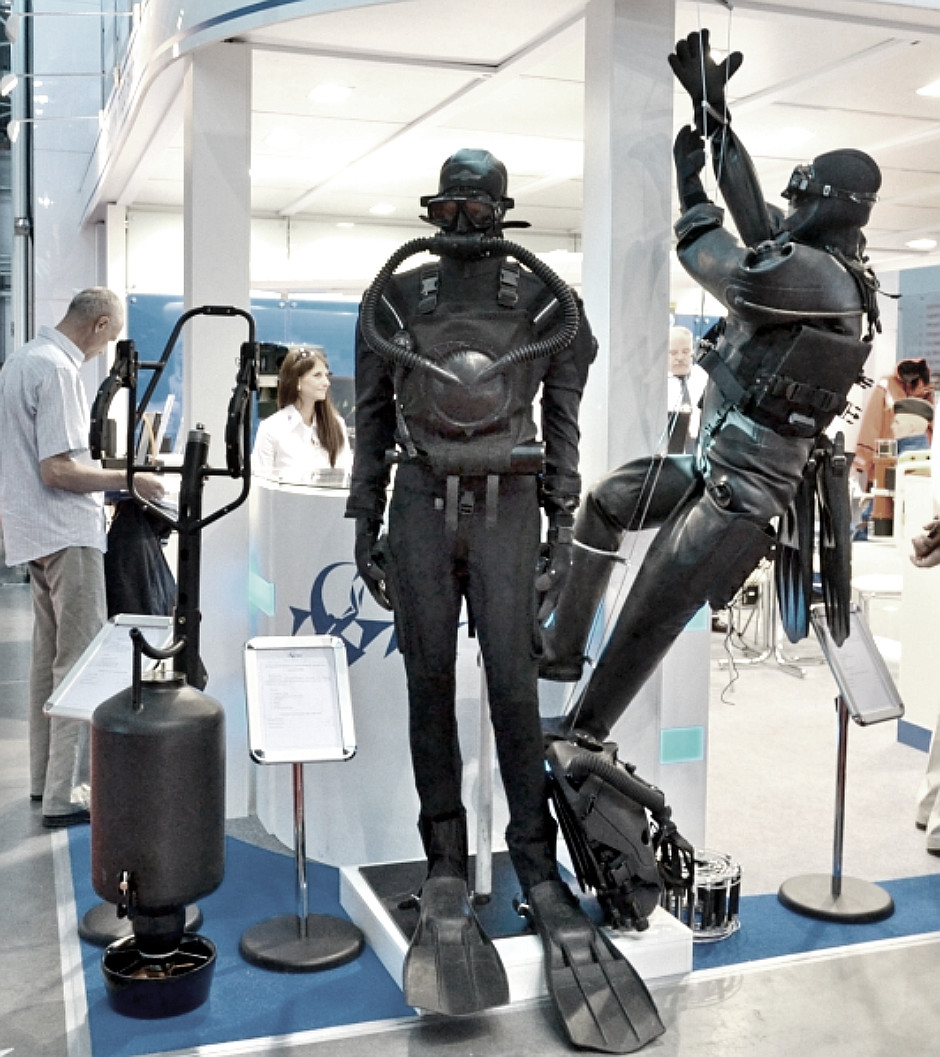
SOM-1 (left) at a trade show

Sirena-UM / UME SDV
Looking like a torpedo, the two crew just about squeeze inside the Sirena-UM's claustrophobic interior. Normal mode of operation is launch from a mother submarine via the torpedo tubes.
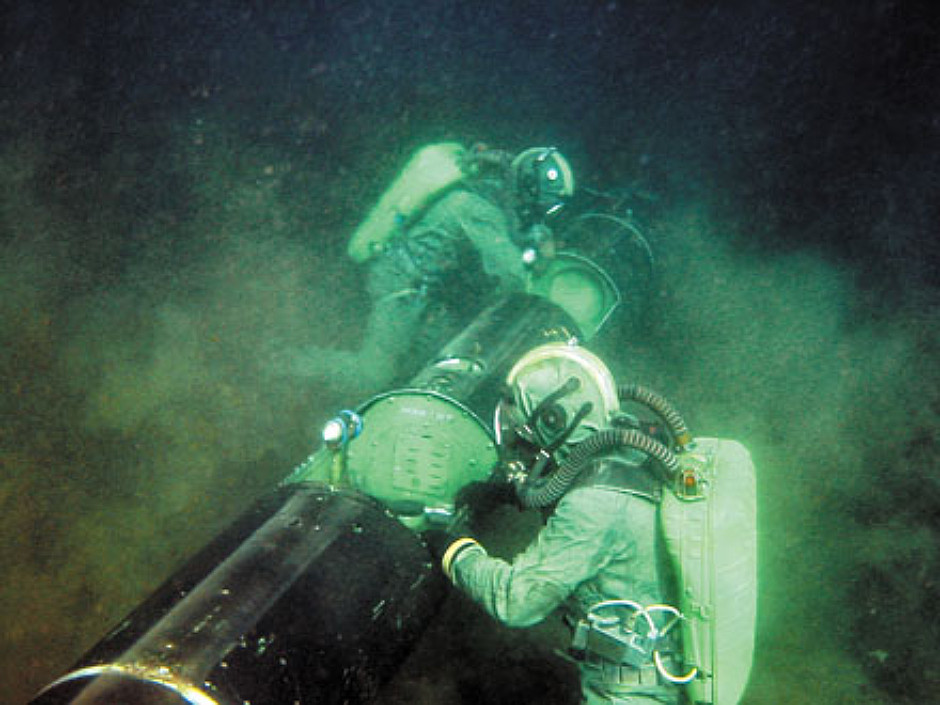
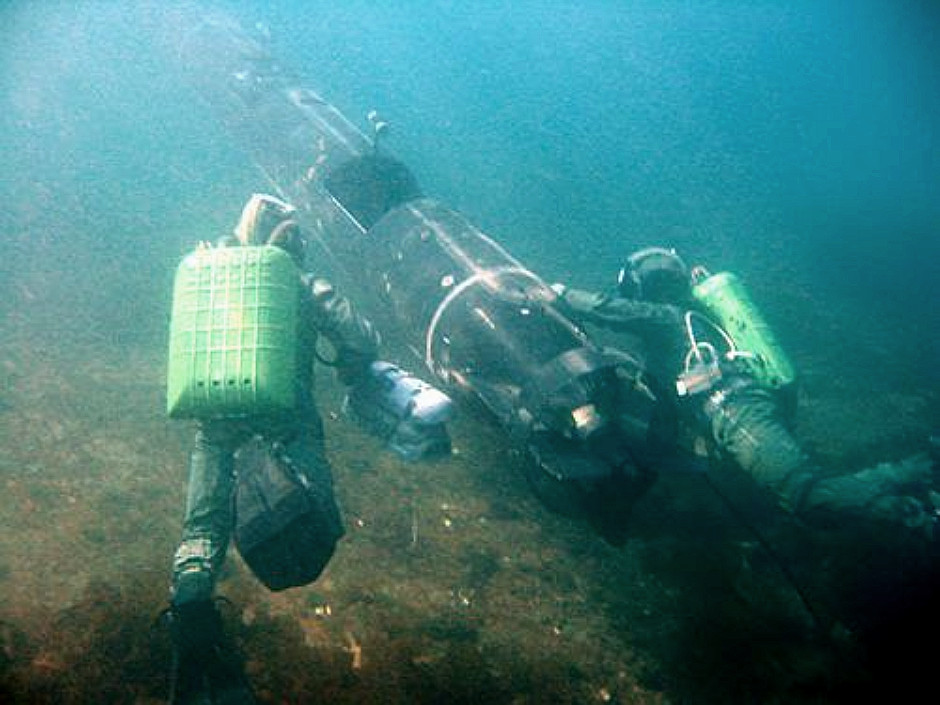
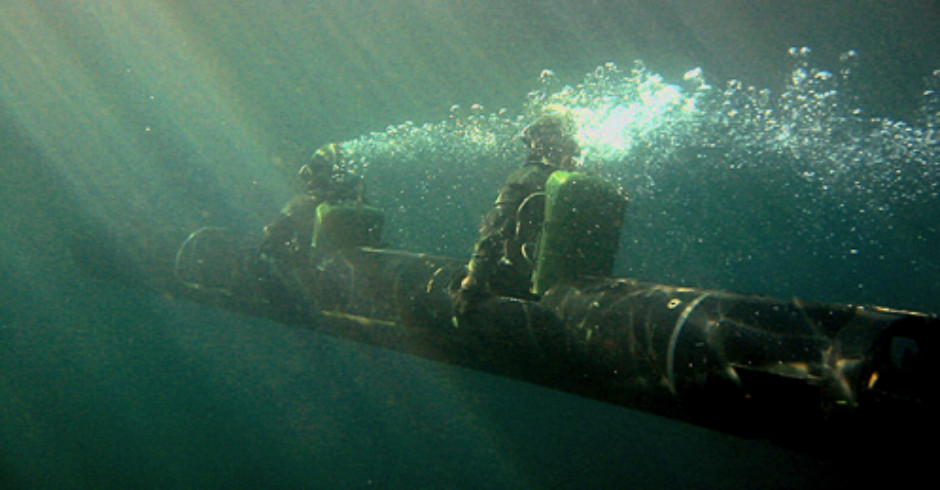
Photo credit Pavlo1
Diameter: 532mm
Length: 8.6m
Length of the container: 10.5m
Weight without container: 1,367 kg
Weight of the container: 1,447 kg
Speed: from 2 to 4kts
Depth: 40m
Cruising range: 8 miles
Endurance: 2 hrs
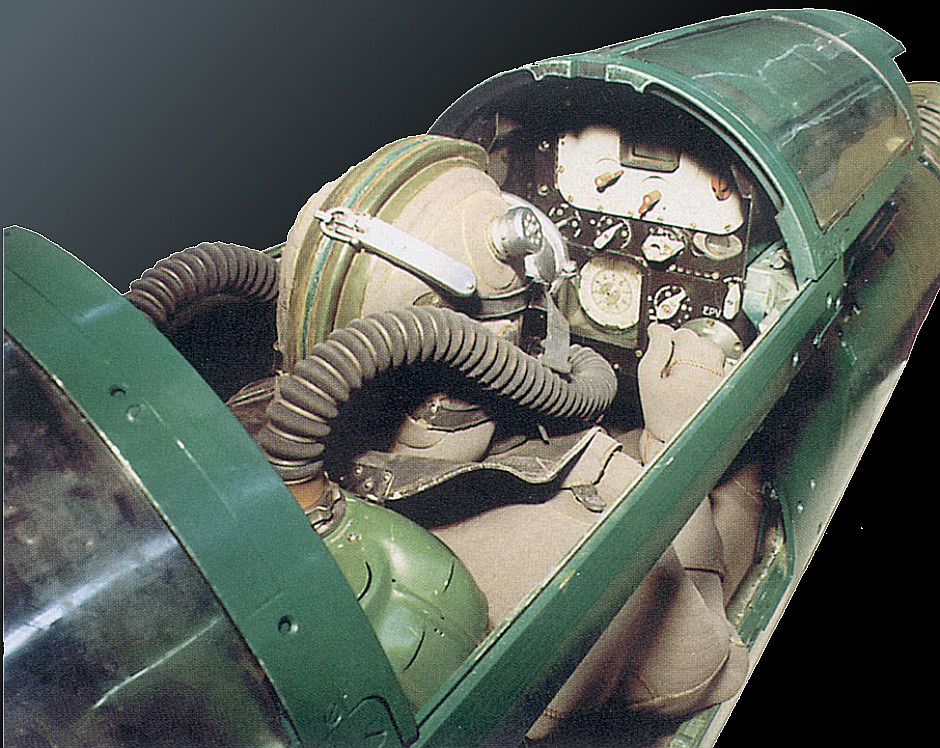

The 'torpedo' nearest the camera is actually a Sirena-UM SDV! Photo A.B. Karpenko
TRITON-2 SDV
Possibility no longer in active service, the Triton-2 was a major SDV program during the cold war. It is loosely equivalent to the USN SEALs' SDV Mk.8, carrying six men over longer distances than previous SDVs. Although it is a wet sub, it is heavily built like a regular submarine to allow a difference in pressure between the water inside and outside the hull. The pilot and navigator sit in the nose beneath the copula, and the four passengers sit in two rows facing aft in the rear of the vehicle, almost in the tail. Between the two crew spaces is a large battery chamber.

Length: 9.5m
Beam: 1.8m
Speed: 5.5kts
Range: 60nm
Sensors: MGV-11 sonar, MGV-6V underwater communication system, Samur navigational complex
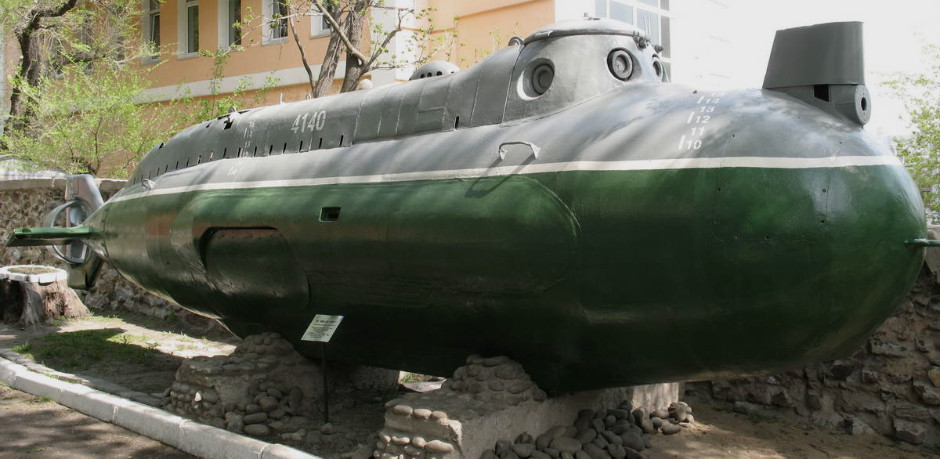
Several Triton-2s serve as static displays and gate guards suggesting that the type is no longer in service
Malachite concept SDVs
The famous Malachite design bureau who produced the earlier Triton and LOSOS Class midget submarines (see below) have been marketing new SDV designs for many years now, seemingly without buyers although its worth noting that the six-man version has been the subject of a technology transfer to India MORE
These factors reduce the likelihood of them being a major type in Spetsnaz service. The two designs are closely related, and are natural progressions of the Triton-1M two-man SDV (see below) but not the Triton-2.


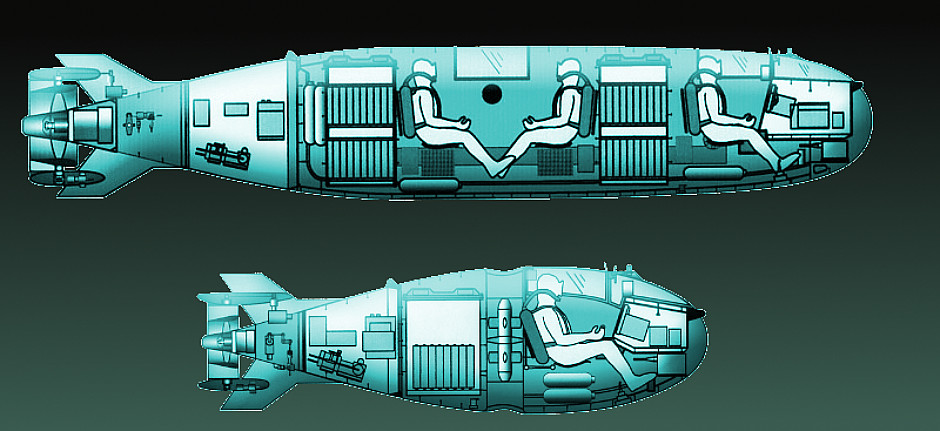
Vehicles no longer in service
a) LOSOS Class (Project 865 Piranha) - two subs based in Baltic. Scrapped in late 1990s
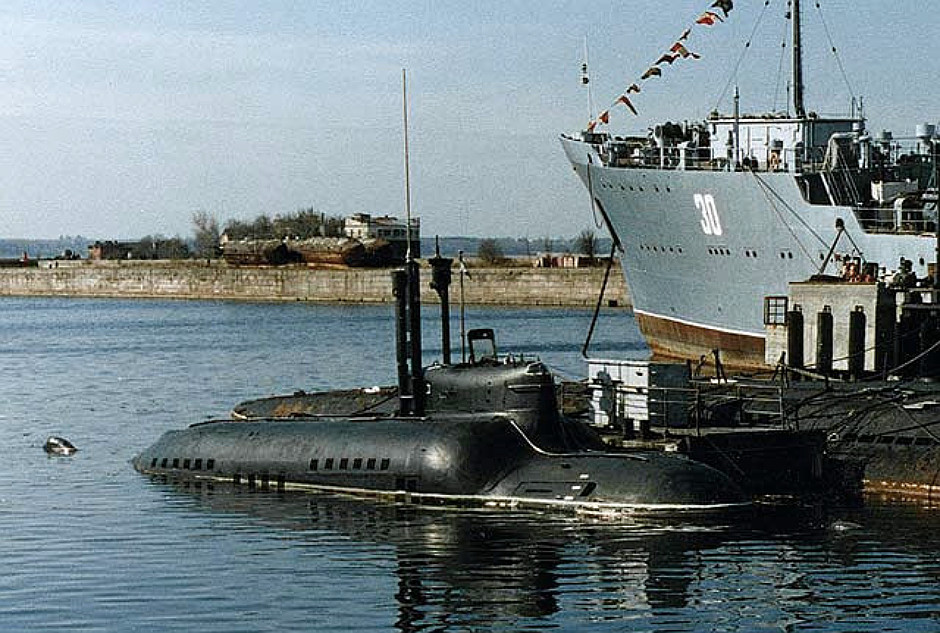
b) Triton-1M (Project 907) - two-man SDV, 32 built in 1970s. Likely retired.

c) Proteus and Protei-5 DPVs - vintage, likely retired
d) Early model PROTON DPVs - likely retired or in limited service
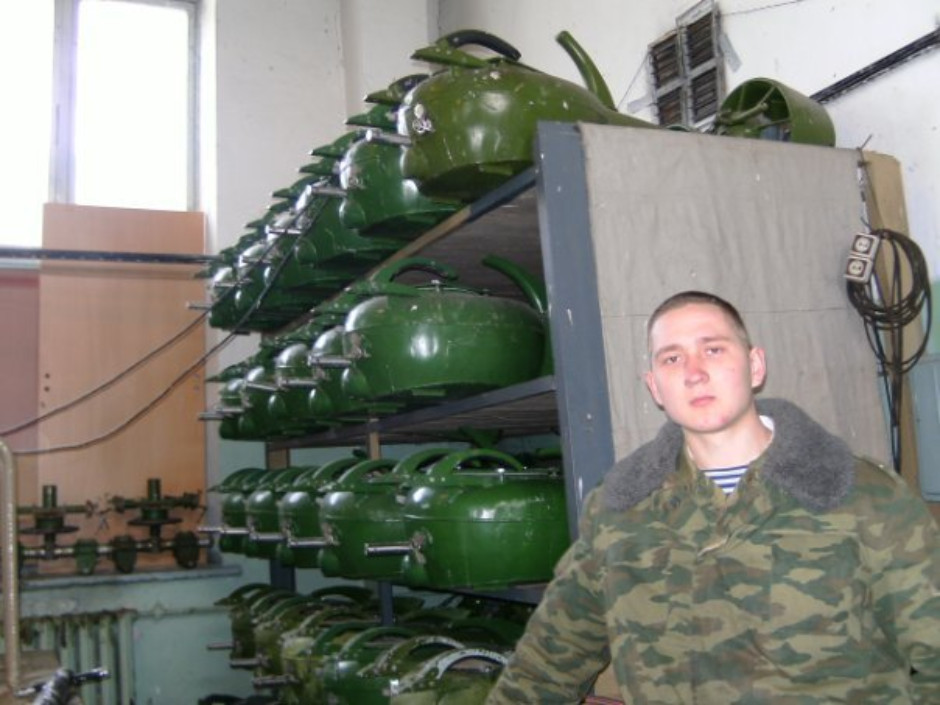
e) Early model Sirena and Sirena-U human torpedoes (SDVs). Dated.
Dolphins
Like the USN the Russians had a marine mammal program centred on dolphins. These were used to find objects and swimmers underwater and to conduct counter-diver operations. There were persistent rumours of offensive taskings although these are a) unconfirmed and b) unlikely given friend-or-foe issues. After the fall f the USSR the main dolphin unit found itself in Ukraine and was inducted into the Ukrainian Navy. Like many units it lapsed into non-operational status and was used as a tourist attraction. More recently it was re-established as an operational unit, but then captured by Russia during the annexation of Crimea in 2014. It is unlikely that the dolphins form an operational unit and if they do it is likely not offensive in nature.
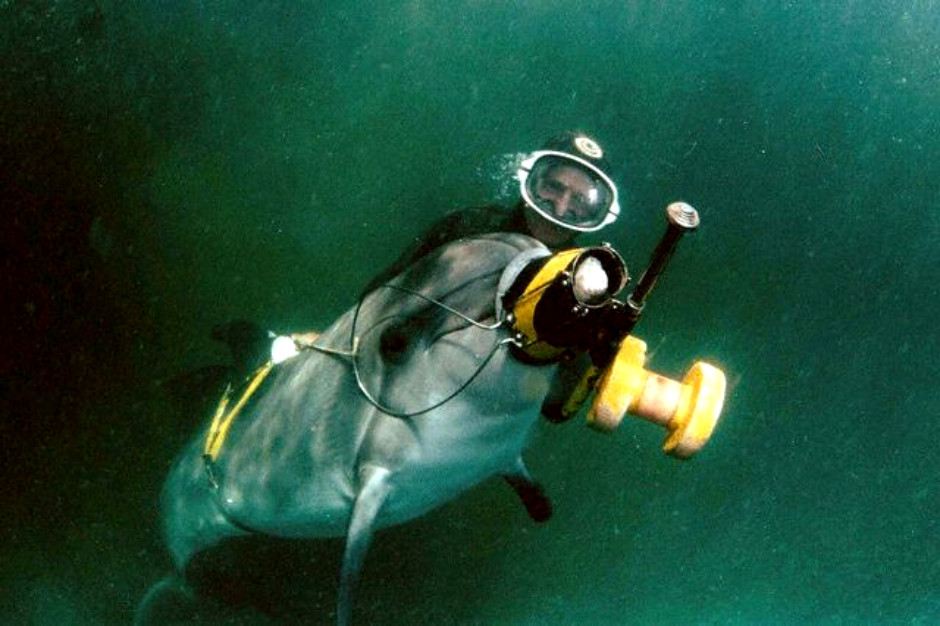
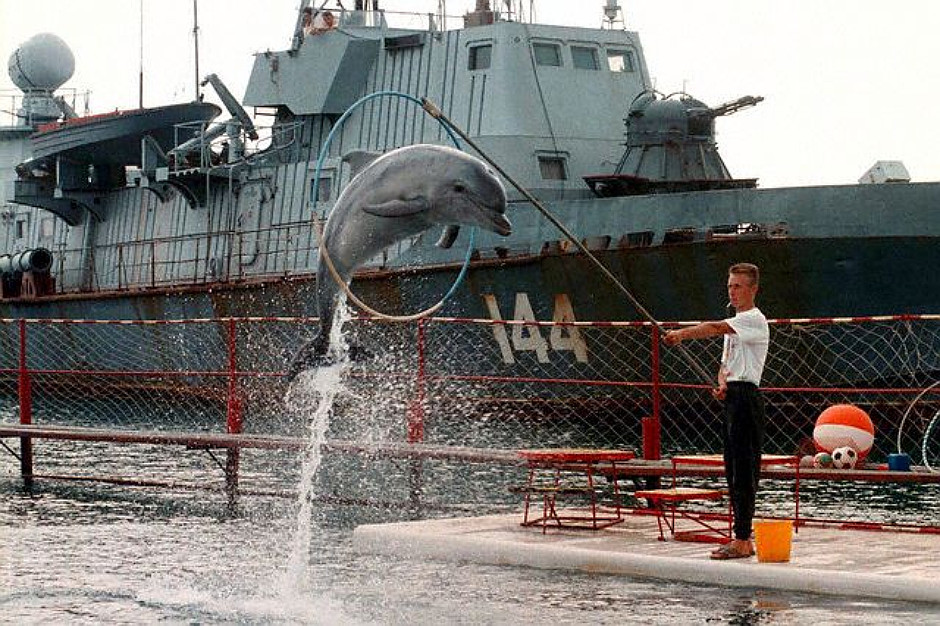
PDSS counter-divers
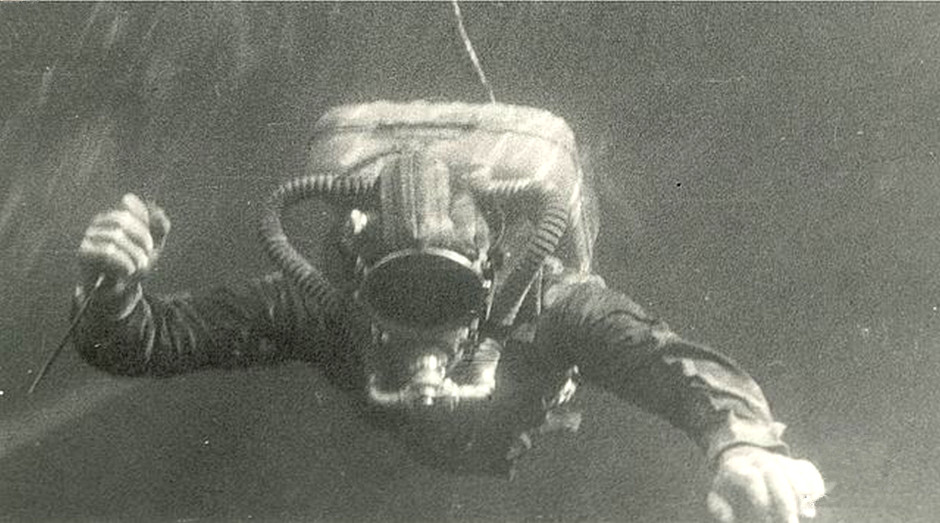
In addition to the Naval Spetsnaz Brigades discussed here, there are several additional Russian special waterborne forces to be aware of. The first is PDSS who are counter-saboteur frogmen. Armed with underwater guns and sometimes using propulsion devices, these fit the popular image of Spetsnaz. Their role is however defensive and confined to friendly ports where they protect vessels from enemy frogmen.
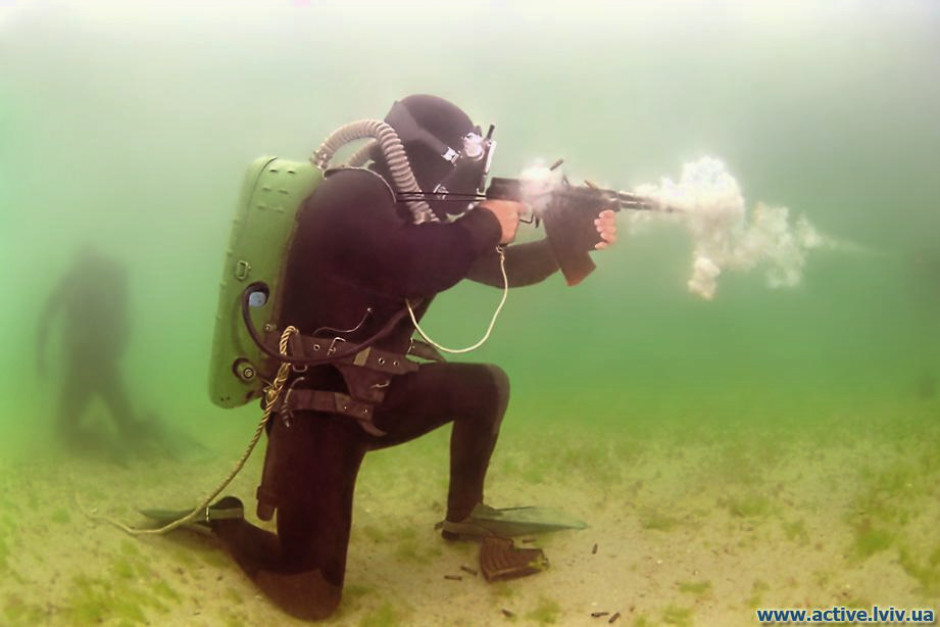
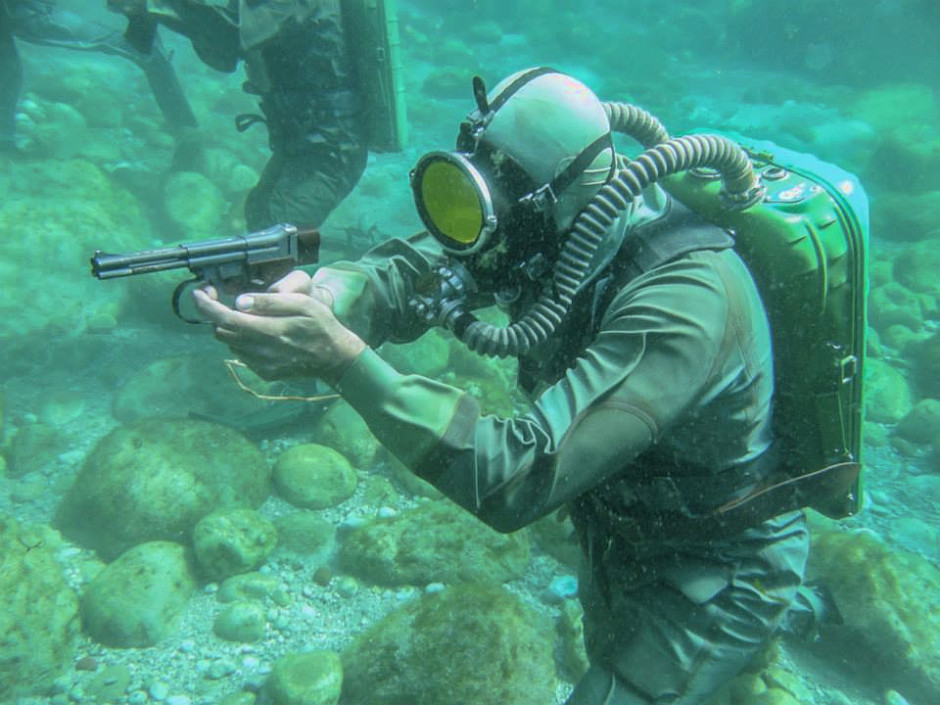
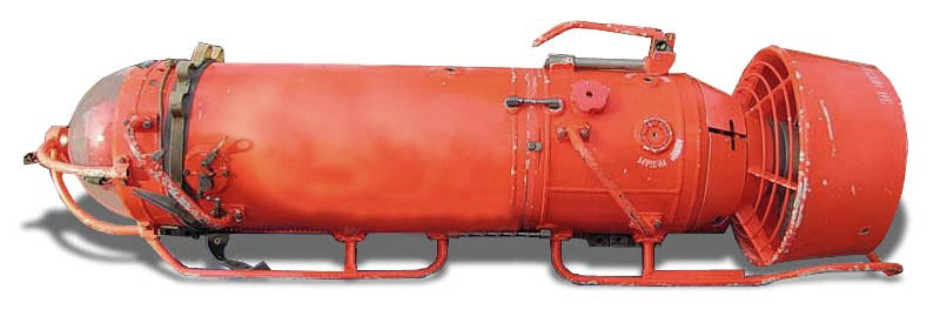
The APS underwater assault rifle, SPP underwater pistol and the above variant of PROTON DPV are mostly associated with PDSS. Note that ordinary firearms are ineffective underwater
GUGI Special Purpose submarines
A less well known organization called GUGI (roughly translates as Main Directorate Deep Sea Research) is responsible for Russian ‘underwater engineering’. This is another euphemism meaning spying by means of planting, tampering with or stealing objects underwater. Typically it involves deep submergence missions so this branch of the Navy is equipped with special purpose nuclear powered submarines such as the p.1910 UNIFORM and p.1851 X-RAY class spy subs. More up to date kit is the p.210 LOSHARIK class which is highly secretive. These submarines are crewed by naval personnel, including ‘Hydronauts’ who man the deep submergence vessels and divers, but the submarines get their orders directly from the Ministry of Defense. Crucially all these assets are based in the Northern Fleet and are not really associated with either the Baltic or the Black Sea. An interesting branch with lots of fascinating secret kit, this is a topic for a separate article.

Rare photo of the LOSHARIK midget submarine.
Related Articles

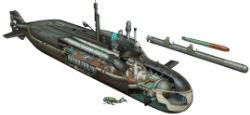 Piranha Class (LOSOS)midget sub
Piranha Class (LOSOS)midget sub

 HDS-500 Midget Submarine
HDS-500 Midget Submarine

 Maritalia GST-23+ Midget Submarine
Maritalia GST-23+ Midget Submarine

 Crocodile 250 Midget Submarine
Crocodile 250 Midget Submarine


